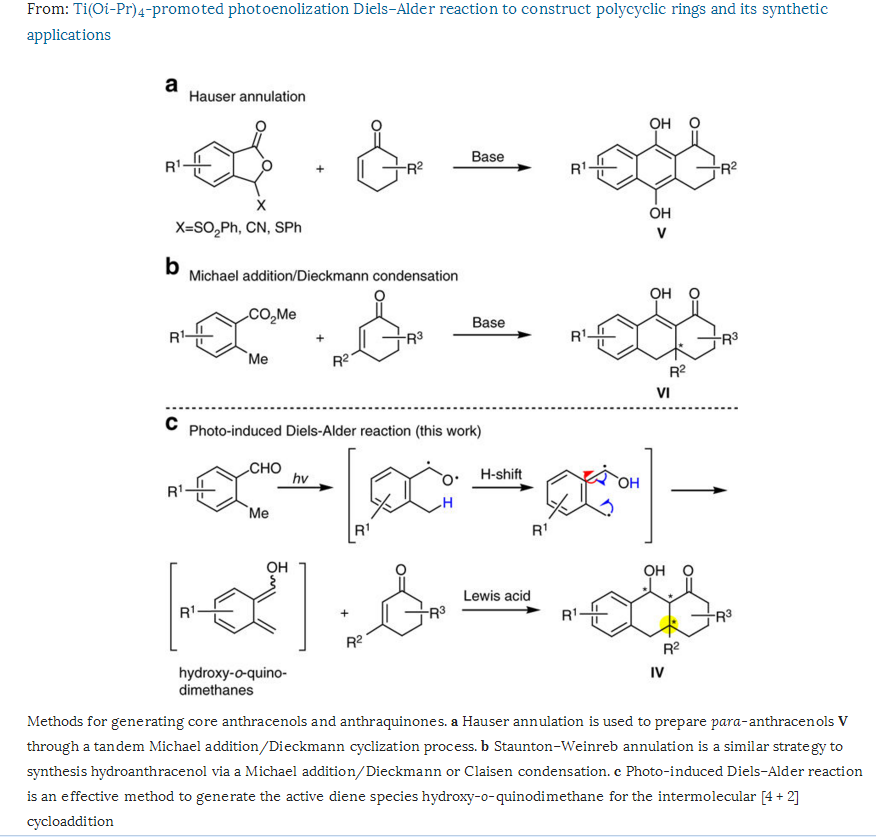Their research findings were reported on September 20 in their research paper: “Ti (Oi-Pr) 4-promoted photoenolization Diels–Alder reaction to construct polycyclic rings and its synthetic applications”, which can be found in the September issue of the online science journal Nature Communications.

Gao Shuanghu (center) and his students
As the main core of the research team, scientists of ECNU received funding to complete the study from the National Natural Science Foundation and the 973 Program of the Ministry of Science and Technology.
ECNU Ph.D candidate, Yang Baochao, was credited as the first author of the research paper. Including other contributors such as graduate student Lin Kuaikuai and postdoctoal fellow Shi Yingbo.
Prof. Gao’s research team devotes itself to synthetic elements and applications of bioactive natural products and pharmacochemistry - and the latest findings on Diels–Alder reaction, hailed as an unprecedented breakthrough for the field of chemistry and molecular engineering, attests to their invaluable work in recent years.
Stereoselective construction of polycyclic rings, with all-carbon quaternary centers and vicinal all-carbon quaternary stereocenters, remains a significant challenge in the emerging study of organic synthesis.

These structures can be found in a wide range of polycyclic natural products and drug molecules; simultaneously, the Ti (Oi-Pr)4-promoted photoenolization Diels–Alder (PEDA) reaction helps construct hydroanthracenol and related polycyclic rings, in relation to all-carbon quaternary centers.
In the photolysis process, a chemical decomposition facilitated by radiant energy (i.e., light), can proceed under mild conditions, at the same time generate a variety of photo-cycloaddition products; in effect, to promote reaction efficiency and stereoselectivity. It has also been utilzed in constructing core skeletons of certain chemical transformations: oncocalyxones, tetracycline and pleurotin. Plus it provides a reliable method to engage with natural products connected with enone groups embodying the late-stages of modification.
According to the ECNU research team, polycyclic rings containing anthracyclines, anthracenols and anthraquinones are ubiquitous in natural products and drug molecules. For example, the most well-known members of this family of natural products - doxorubicin and tetracycline - have been studied extensively as anticancer and antibiotic drugs. In addition they noticed a group of polyketides, with all-carbon quaternary centers, identified within the core of anthracenols or anthraquinones - for instance, pleurotin and oncocalyxone B.
Pleurotin has attracted the attention of chemical and biological communities due to its active resistance against Gram-positive bacteria and its power to inhibit cellular redox regulation, a powerful target for anticancer agents.
Though from a structural point of view, the basic skeletons of these natural polycycles feature linearly fused six-membered rings, with various oxidation states and consecutive stereogenic centers. This structural formation, however, represents the greatest challenge to their chemical synthesis process.
The researchers of the study found the synthesis of these biological and drug derivatives, as a result of Lewis acids-promoted PEDA reaction, can be analyzed in depth for their structural problems, which can be sought in basic skeleton formations of anthracenols and anthraquinones.